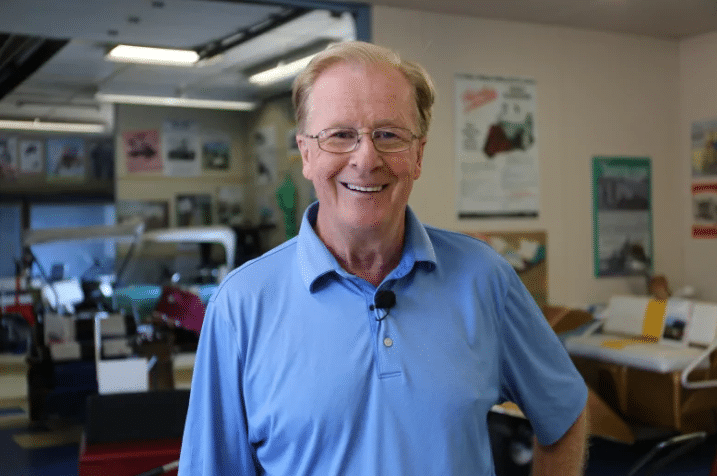
The only Golf Cart Museum in Canada
As Ron Lyons of Alberta, Canada, tells it to CBC News, golf carts are an important part of golf history. More than just a novelty product that caught on and now dominates the options for getting around a golf cart, the way pro shops were set up and what they sold and even golf course layouts were affected by those bouncy buggies, he says.
Lyons should know. He owns Canada’s only golf cart museum, located at The Legends Golf and Country Club, which presents visitors with an amusing look at golf cart styling through the ages. In total, he has 85 vintage carts, many of them close to impossible to find.
And Lyons is right. Golf carts did change the game of golf.
Golf carts certainly spelled the end for those tip-hungry youngsters we used to call caddies, thereby changing the social aspect of the game and derailing the one sure summer job that could keep a golf-crazed teenager close to the game. As such, player development shifted. No more caddies on the average golfer’s course: A lot fewer golf jokes shared at the turn.
But if the jokes are told on a golf course, it’s just as likely the person telling the joke could be in his or her 70s, 80s or 90s. Golf carts certainly extended the options for play to elderly golfers around the world.
Lyons has restored all of the carts on display to a pristine, polished, shiny glaze. And with all that competitive 1950s and 1960s styling, they are pretty irresistible.

Well, irresistible and doomed. For example, Lyons has restored a quirky one-seater that held the bag lying at a slight uphill tilt in front of the driver. The driver would park the cart, walk to the front and pull out a club. But if that driver went down a steep incline, the clubs would likely spill out right in front of the cart, where they would certainly be run over. Big oops.
Lyons also owns the only model ever made with the steering column on the right side. It was made in Canada, Lyons explains to a visitor in the CBC News clip below. (Likely that means it was built for export to other Commonwealth countries, because Canada drivers drive are on the same side of the road as drivers in the United States.)
Today, there are only a handful of golf cart manufacturers, but as popular demand for golf carts took hold in the 1950s and 1960s, says Lyons, lots of competitors jumped into the market, each of them offering their own ingenuity and flare. They all tried to “build a better mousetrap,” Lyons said. As such, there are more than a few offbeat models in the museum.
One of the oddest of them all is the first golf cart ever designed, a 1949 model that has a four-person bench in the front of the cart. If it were being driven in your direction, you would see four people sitting in a row facing in your direction – a floating bench. This would mean you could stomp on the brake and dump four people right into that water hazard on the fifth hole, if you so desired. Behind the bench is a platform with rails, where golfers could put their bags and behind that was the driver, who had to somehow look through the forest of golf clubs in front of him and whoever was on the front bench to see where he was going. Very possibly, a few of these babies did end up at the bottom of golf course water hazards.

Lyons did not start out collecting golf carts. He is the co-owner of the Legends Golf and Country Club near Sherwood, Alberta, and he just thought that three or four vintage carts would add to the décor of his clubhouse. Soon enough, he was restoring two or three a year. “They became like rabbits,” Lyons said. Over time, he had collected enough vintage carts to call his odd collection a bone fide museum.
The film clip shows a few of the carts’ manufacturer’s logos. There’s a Jato cart on the lot, a Marketeer and an Envoy golf cart. There’s also a Caddy Car, a G. Thibault model and a Chadwick, made, apparently, by BMW.
Lyons told CBC News that he travels frequently to play golf and on these trips he keeps his ears and eyes open in the hopes of adding to his collection. What started as a hobby has become a habit.
The Golf Cart Museum, is free and it’s open “most Sundays.” You might want to call in advance and sign up for a tee time while you’re at it.








I recently purchased a Caddy Car ACE 3. I got it running and drive in around my yard. Very Fun. I know that parts for the 7hp Kohler are readily available. I hope I don’t have to look for any drive-train parts because I wouldn’t know where to look. Very cool museum!!!